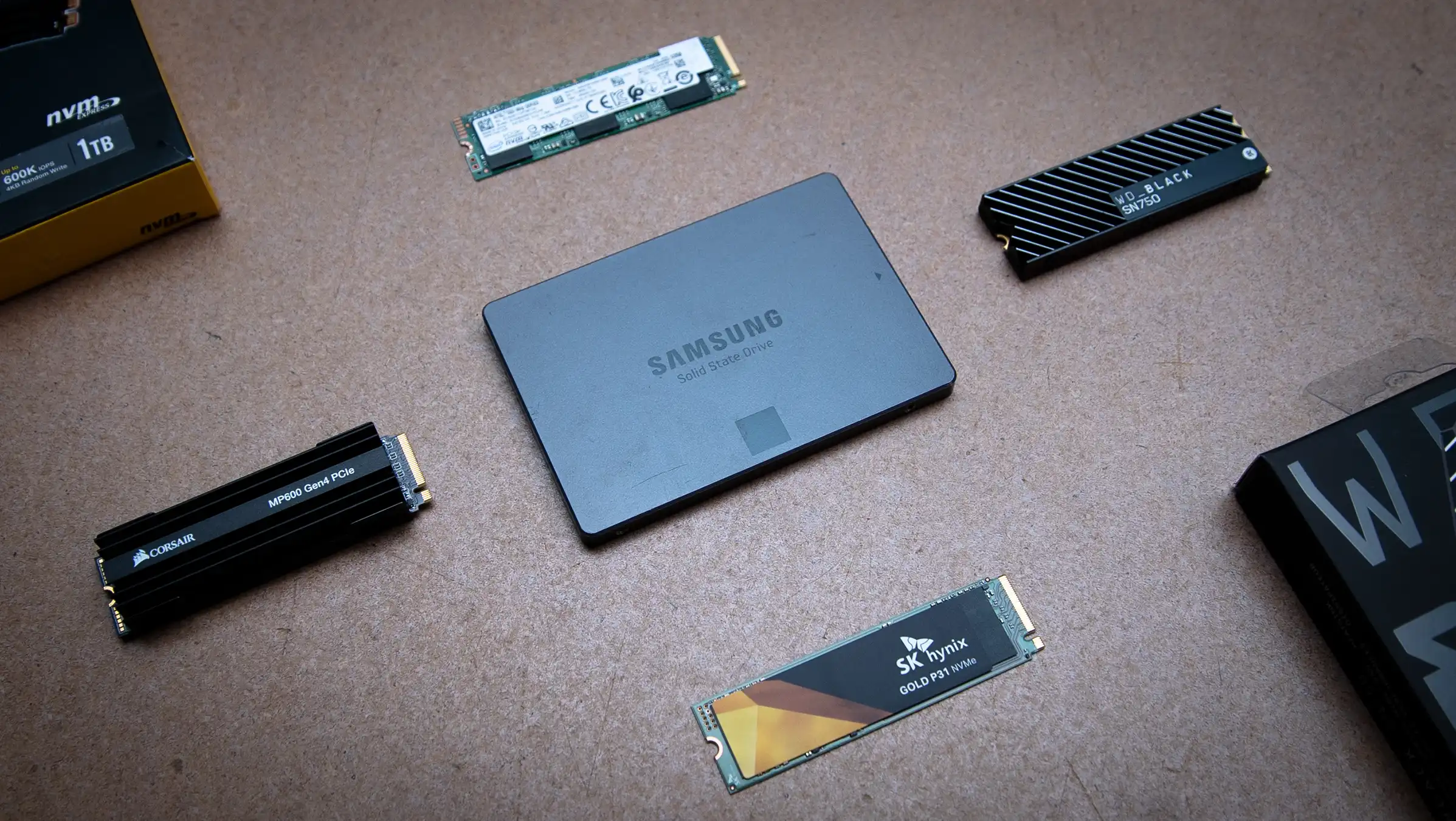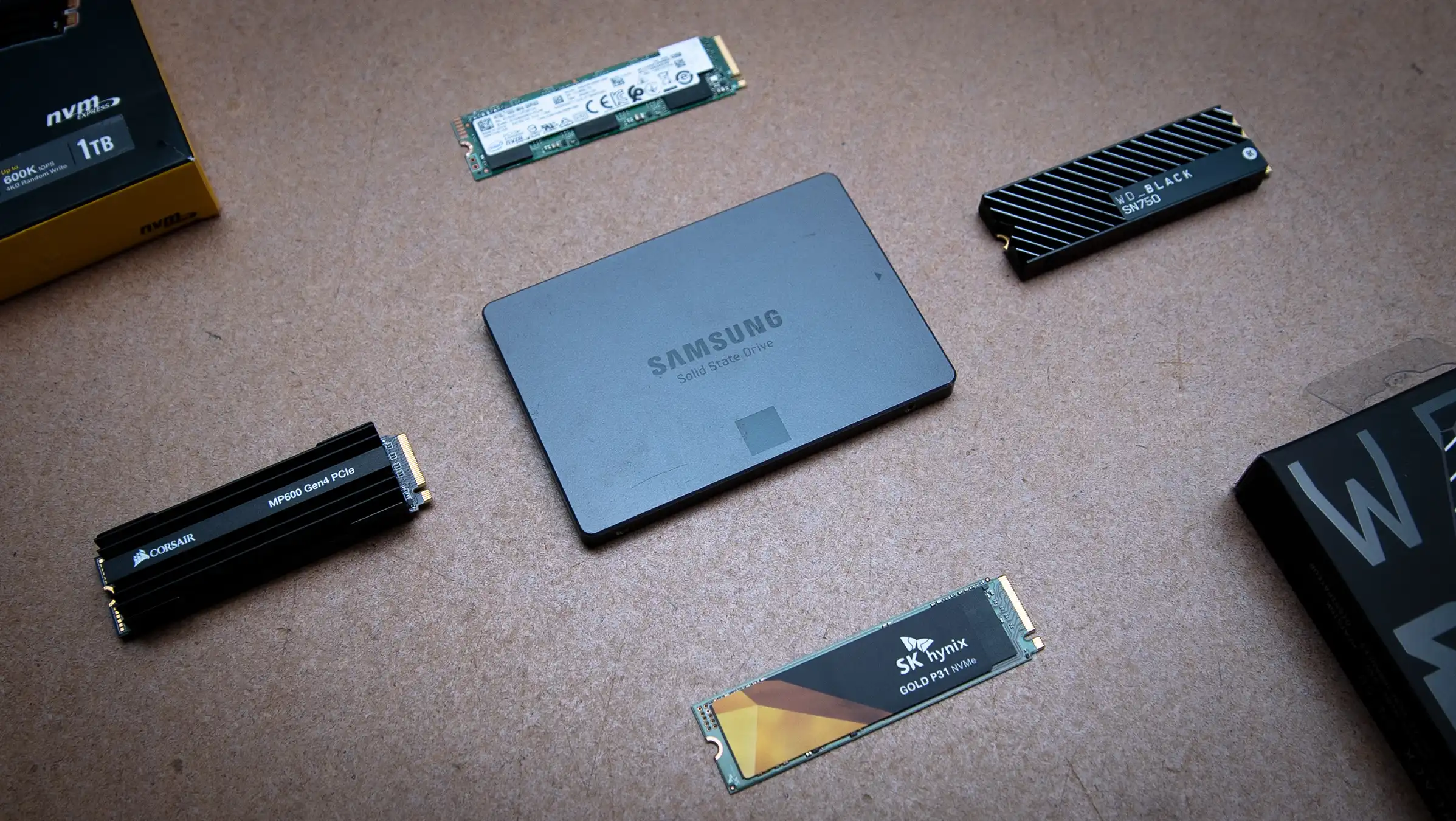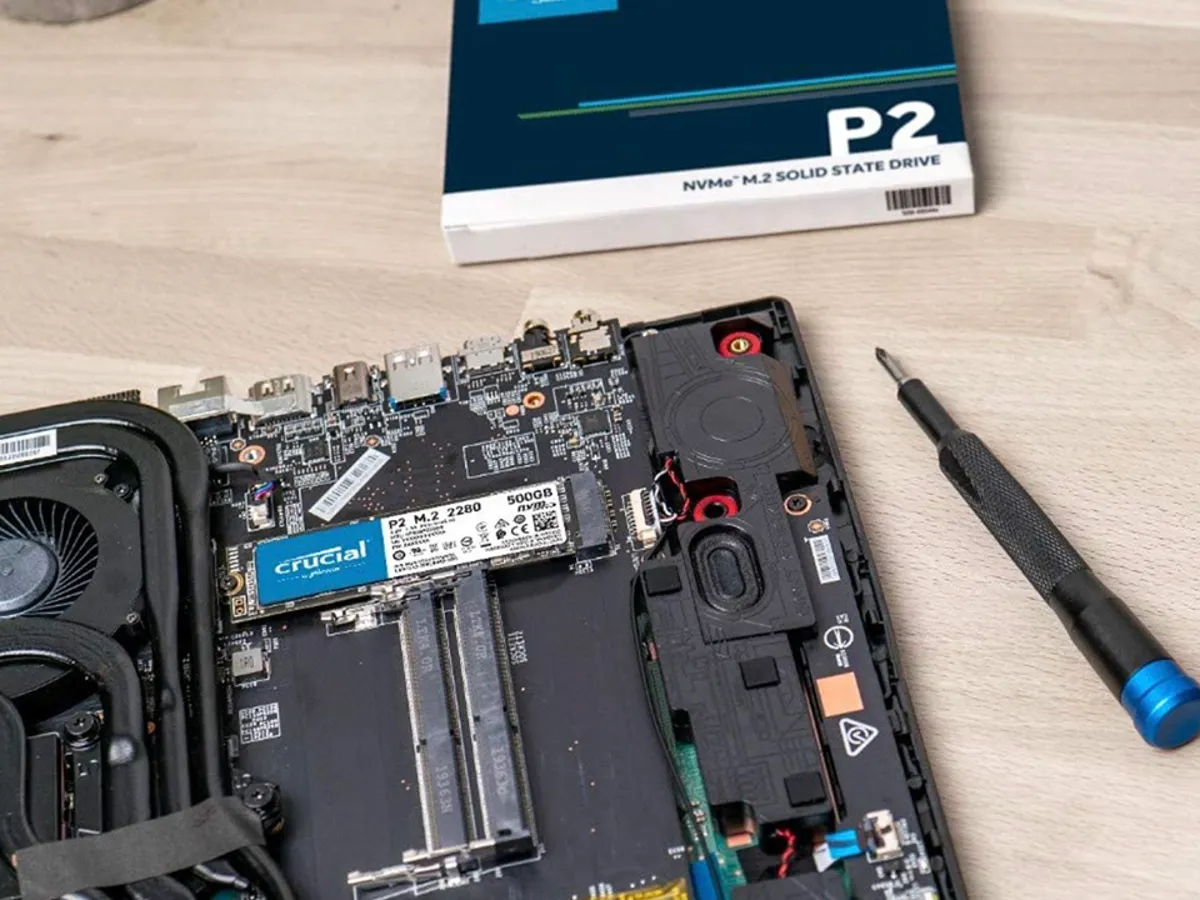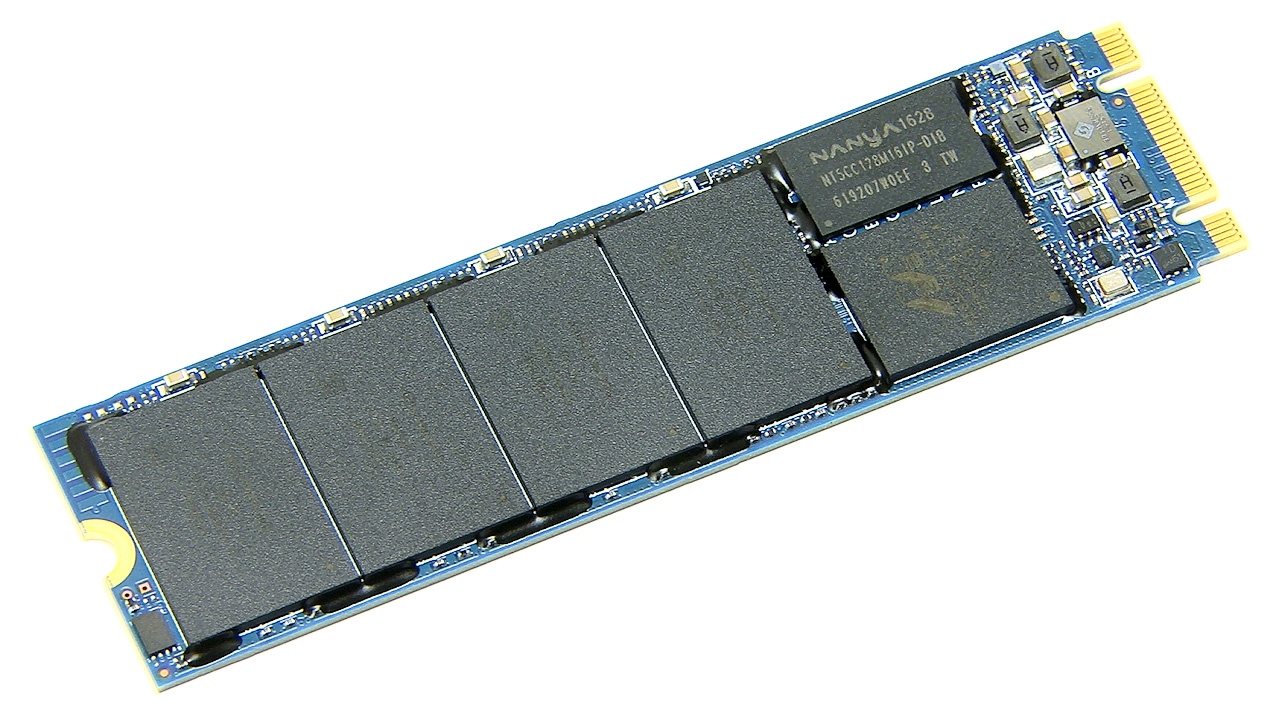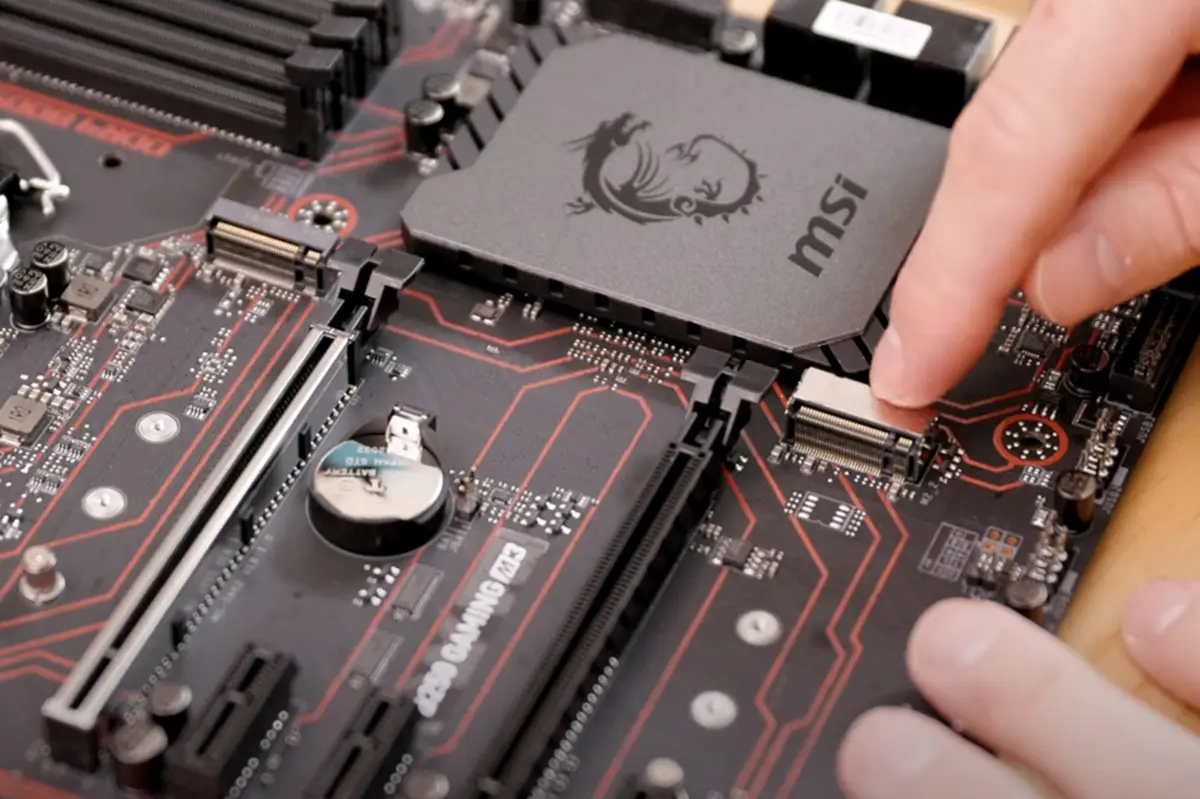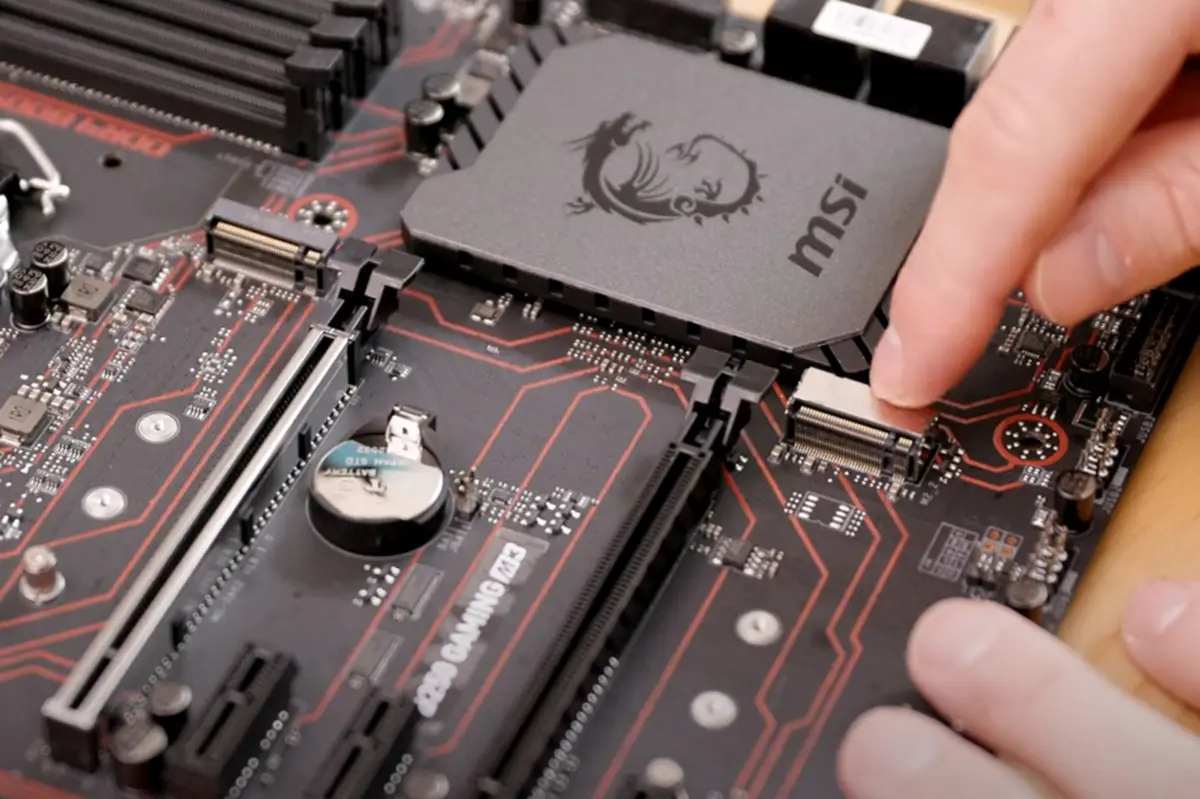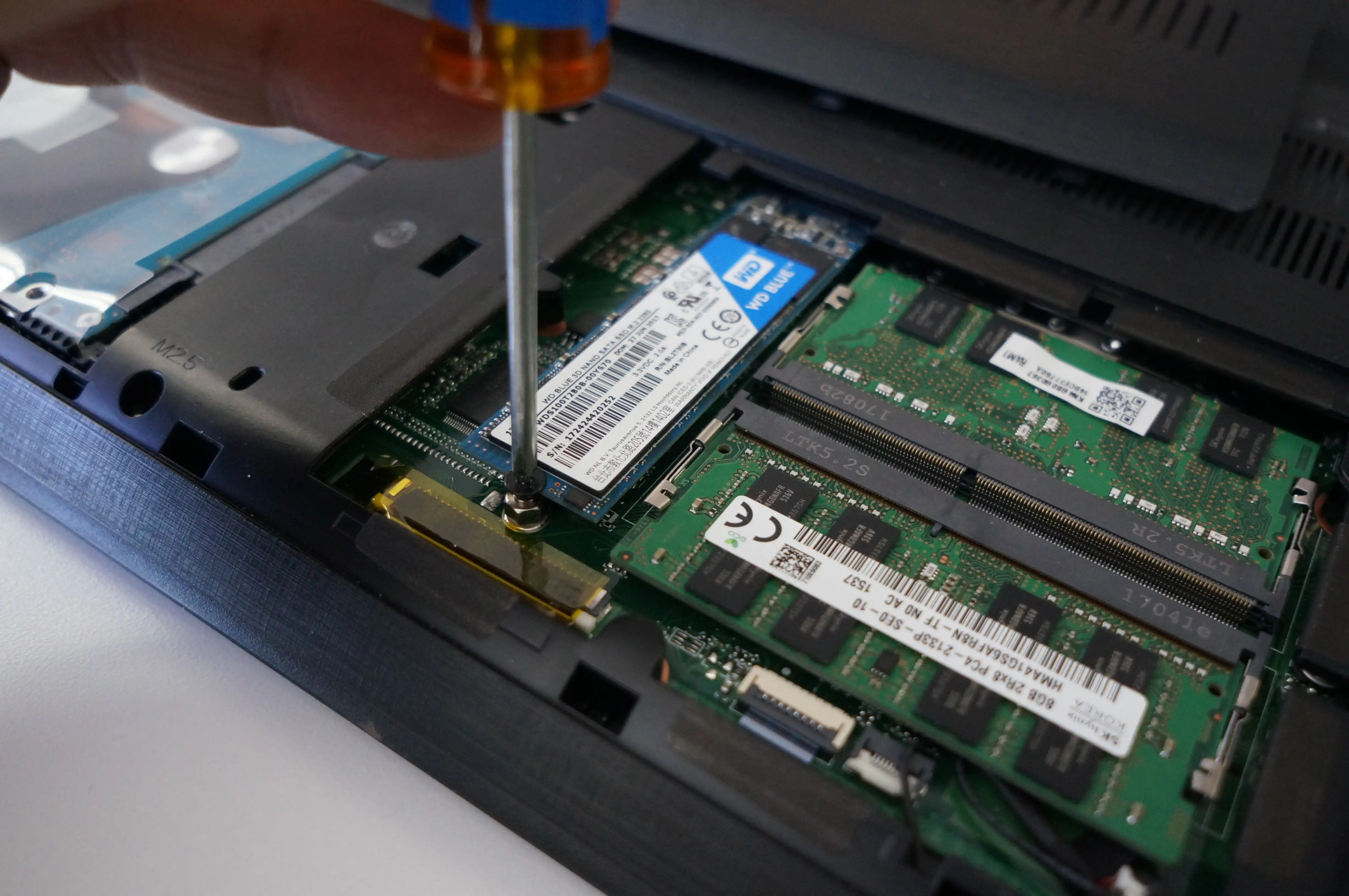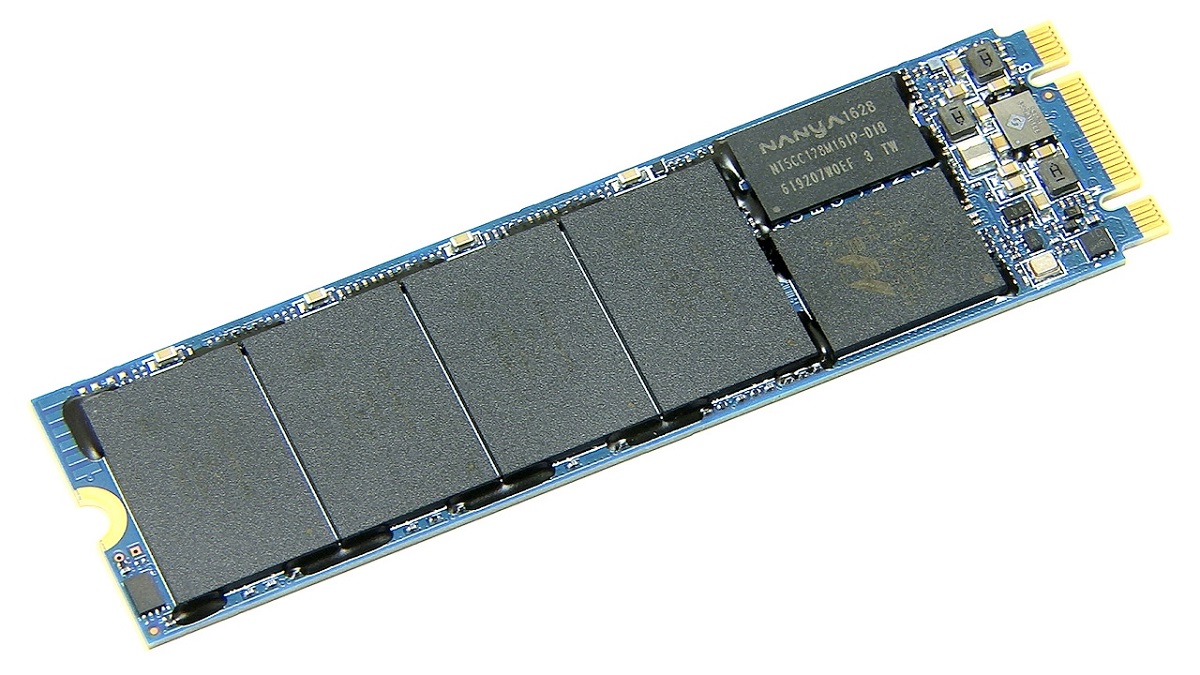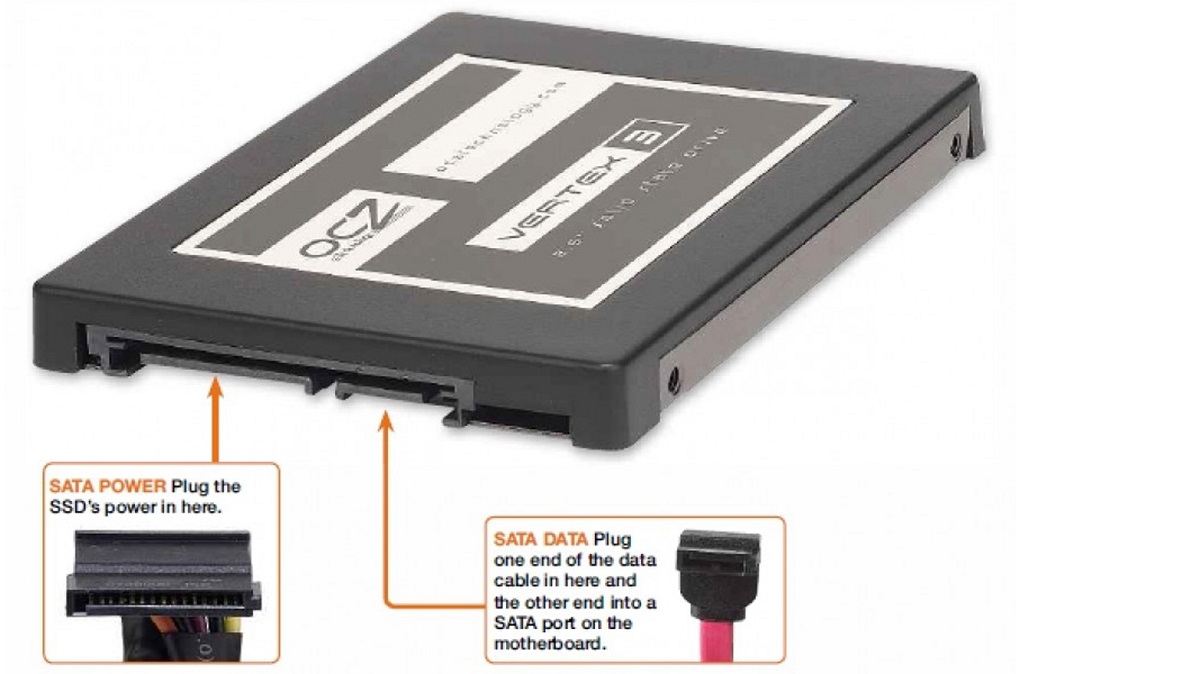Introduction
Welcome to the world of solid-state drives (SSDs) and M.2s, two cutting-edge technologies that have revolutionized the world of storage. If you are in the market for a new computer or looking to upgrade your existing system, you have likely come across these two terms. However, you might be wondering, which is faster: SSD or M.2?
Before we delve into the speed comparison, let’s take a moment to understand what exactly SSDs and M.2s are, and how they differ from traditional hard disk drives (HDDs).
SSDs, as the name suggests, are storage devices that use solid-state memory (usually NAND flash) to store and retrieve data. Unlike HDDs, which rely on spinning magnetic disks and mechanical components, SSDs have no moving parts. This design advantage translates into significant performance benefits, including faster data access times, improved random read and write speeds, and enhanced durability.
M.2, on the other hand, refers to a form factor for storage devices. M.2 drives are small, slim, and connect directly to the motherboard of a computer. They use the NVMe (Non-Volatile Memory Express) or SATA (Serial ATA) interface to transfer data. M.2 drives come in different lengths and widths, allowing for flexibility in fitting them into various devices such as laptops, desktops, and even small form-factor systems.
Now that we have a basic understanding of what SSDs and M.2s are, let’s delve deeper into the technical differences between the two and assess which one offers superior performance in terms of speed.
What is an SSD?
A solid-state drive (SSD) is a type of storage device that has become increasingly popular in recent years. Unlike traditional hard disk drives (HDDs) that use spinning disks and mechanical parts to read and write data, SSDs utilize non-volatile memory, usually NAND flash, to store and retrieve data.
The absence of moving parts in SSDs brings about several advantages over HDDs. Firstly, SSDs offer significantly faster data access times. With no mechanical components to wait for, the time required to access data is reduced, resulting in quicker file transfers and faster application load times.
Furthermore, SSDs boast impressive random read and write speeds. This means that accessing and retrieving small, scattered pieces of information from different locations on the drive is much quicker compared to HDDs. This has a direct impact on overall system responsiveness and can greatly improve user experience, especially in tasks that involve heavy disk usage.
In addition to speed, SSDs are known for their durability. As there are no moving parts that can wear out over time, SSDs tend to be more resistant to shock and physical damage. This feature is particularly beneficial for laptops and portable devices that are more prone to accidental drops or bumps.
Another advantage of SSDs is their silent operation. Since there are no spinning disks or mechanical components, SSDs do not produce any noise during operation. This makes them a popular choice for those seeking a quieter computing experience, especially in environments where noise reduction is crucial, such as recording studios or quiet offices.
SSDs have evolved over the years and are now available in various form factors and capacities. They can be found in standard 2.5-inch drives for desktops and laptops, as well as smaller M.2 drives for ultra-thin devices. SSDs have become increasingly affordable, making them an attractive option for both casual users and professionals who demand high-performance storage.
With their speed, durability, and silent operation, SSDs have revolutionized the storage industry. Whether you’re a gamer looking for faster load times, a content creator seeking a responsive editing experience, or a casual user wanting to speed up your overall system performance, upgrading to an SSD can make a noticeable difference in your computing experience.
What is an M.2?
M.2 is a form factor for storage devices that has gained popularity in recent years. It provides a compact and versatile solution for adding storage to various devices, including laptops, desktops, and small form-factor systems.
One of the key advantages of M.2 drives is their small size. These slim storage devices are designed to be directly connected to the motherboard, eliminating the need for cables and reducing clutter within the system. M.2 drives have different lengths and widths, with the most common ones being 22mm wide and available in lengths of 30mm, 42mm, 60mm, 80mm, and 110mm. This flexibility allows them to fit into different devices with varying space constraints.
There are two main types of M.2 drives: NVMe (Non-Volatile Memory Express) and SATA (Serial ATA). NVMe drives utilize the PCIe (Peripheral Component Interconnect Express) interface, which offers faster data transfer speeds compared to SATA. NVMe M.2 drives take advantage of the PCIe lanes available on the motherboard, enabling them to achieve blazing-fast read and write speeds.
SATA M.2 drives, on the other hand, use the same interface as traditional SATA SSDs, allowing for compatibility with a wider range of systems. Although SATA M.2 drives are not as fast as NVMe drives, they still provide significant performance improvements over traditional HDDs.
When it comes to storage capacity, M.2 drives have kept pace with their larger counterparts. You can find M.2 drives with capacities ranging from a few hundred gigabytes to multiple terabytes, giving you ample space to store your files, applications, and games.
Another benefit of M.2 drives is their ease of installation. They usually come with a simple screw or latch mechanism, allowing for hassle-free installation without the need for additional tools or expertise. This makes upgrading or adding storage to your system a breeze.
Furthermore, M.2 drives often come equipped with advanced technologies such as TRIM support and wear-leveling algorithms that optimize performance and prolong the lifespan of the drive. These features help maintain the drive’s speed and reliability over time, ensuring consistent performance throughout its lifespan.
Overall, M.2 drives offer a compact, high-performance storage solution for modern systems. Whether you’re looking to upgrade your laptop, build a compact desktop, or enhance the storage capabilities of a small form-factor system, M.2 drives provide the speed, versatility, and convenience needed to meet your storage requirements.
Technical Differences
While both SSDs and M.2 drives fall under the umbrella of solid-state storage, there are some technical differences between the two that are worth considering when assessing their performance and capabilities.
One of the main differences lies in the interface that each uses to communicate with the computer. SSDs typically use the SATA (Serial ATA) interface, which has been the standard for connecting storage devices for many years. On the other hand, M.2 drives can use either the SATA or NVMe (Non-Volatile Memory Express) interface.
The NVMe interface, specifically designed for solid-state storage, offers significant advantages in terms of speed and performance. It utilizes the PCIe (Peripheral Component Interconnect Express) lanes on the motherboard to achieve faster data transfer rates compared to the SATA interface. This makes NVMe M.2 drives faster and more suitable for high-performance applications that demand lightning-fast read and write speeds.
Another notable technical difference is the form factor. SSDs come in various form factors including 2.5-inch, mSATA, and M.2. M.2 drives, as mentioned earlier, are slimmer and smaller, allowing for more flexibility in terms of fitting into different devices. This compact size makes M.2 drives particularly popular in ultra-slim laptops and compact desktop systems where space is limited.
When it comes to power consumption, M.2 drives tend to be more efficient compared to traditional SSDs. This is partly due to their compact form factor and the fact that they connect directly to the motherboard, eliminating the need for additional power cables. Lower power consumption can lead to greater energy efficiency and longer battery life, making M.2 drives ideal for mobile devices.
Lastly, it is important to consider the storage capacity options available for each type of drive. SSDs commonly offer larger storage capacities, with terabyte-sized drives becoming increasingly common. M.2 drives, on the other hand, typically have smaller capacities, although larger capacities are becoming more readily available. It’s worth noting that while SSDs may offer larger storage options, M.2 drives can still provide ample space for most consumer needs.
Overall, the technical differences between SSDs and M.2 drives come down to speed, form factor, power consumption, and storage capacity options. These differences should be taken into account when choosing the right storage solution for your specific needs, whether it’s for a high-performance desktop, a slim laptop, or a compact form-factor system.
Speed Comparison
When it comes to speed, both SSDs and M.2 drives offer significant performance improvements over traditional hard disk drives (HDDs). However, there are notable differences in speed between the two.
SSDs, with their solid-state memory and lack of mechanical components, already provide a substantial speed boost compared to HDDs. The faster data access times, improved random read and write speeds, and overall responsiveness make SSDs a popular choice for those seeking enhanced performance.
M.2 drives take speed to a whole new level. With their use of the NVMe interface, M.2 drives can achieve incredibly fast read and write speeds. The PCIe lanes on the motherboard allow for direct and high-bandwidth communication between the M.2 drive and the CPU, resulting in exceptional performance.
On average, NVMe M.2 drives can provide sequential read speeds of over 3,000 MB/s and sequential write speeds of over 2,000 MB/s. In comparison, SATA SSDs typically offer sequential read speeds of around 550 MB/s and sequential write speeds of around 500 MB/s. This significant difference in speed showcases the superiority of NVMe M.2 drives in terms of raw performance.
While the speed advantage of M.2 drives is undeniable, it’s important to note that real-world performance may vary based on various factors. The specific model and brand of the drive, the workload being performed, and the rest of the system’s hardware configuration can all impact the actual speed experienced.
Factors such as the number of PCIe lanes available and the generation of PCIe used by the motherboard can also affect the performance of M.2 drives. Some older systems may have limited PCIe support or utilize fewer lanes, resulting in slightly reduced performance compared to newer systems that fully support NVMe M.2 drives.
Additionally, it’s worth mentioning that although M.2 drives excel in speed, their performance gains may not always be noticeable in everyday computing tasks. Tasks such as web browsing, document editing, and media playback may not fully utilize the speed capabilities of M.2 drives. However, in resource-intensive applications like content creation, video editing, and gaming, the faster speeds provided by M.2 drives can have a noticeable impact on performance.
In summary, M.2 drives, especially those utilizing the NVMe interface, offer significant speed advantages over traditional SATA SSDs. The sequential read and write speeds of NVMe M.2 drives far exceed those of SATA SSDs, providing superior performance for demanding applications. However, it’s essential to consider other factors that may impact real-world performance when making a decision on which type of drive to choose.
Factors Affecting Speed
Although SSDs and M.2 drives offer faster speeds compared to traditional hard disk drives (HDDs), there are several factors that can impact the overall speed and performance of these storage devices. Understanding these factors is crucial when assessing the speed capabilities of different drives and optimizing their performance.
The first factor to consider is the type of interface used by the drive. As mentioned earlier, M.2 drives can utilize either the SATA (Serial ATA) or NVMe (Non-Volatile Memory Express) interface. NVMe M.2 drives, with their direct connection to the PCIe lanes on the motherboard, generally offer faster speeds than SATA M.2 drives.
Another important factor is the specific model and brand of the drive. Not all SSDs or M.2 drives are created equal, and different models can have varying performance characteristics. It’s important to research and compare the specifications and reviews of different drives to ensure you choose one that meets your speed requirements.
The workload being performed on the drive can also affect its speed. Certain tasks, such as large file transfers, video editing, and gaming, can put more strain on the drive and require faster read and write speeds. On the other hand, tasks like web browsing or document editing may not heavily rely on the speed capabilities of the drive.
In addition, the hardware configuration of the overall system can impact the speed of SSDs and M.2 drives. The available number of PCIe lanes, the generation of PCIe used by the motherboard, and the quality of the motherboard’s controller can all influence the drive’s performance. Newer systems with more PCIe lanes and support for the latest generations of PCIe will generally offer better performance for M.2 drives.
It’s also worth considering the level of drive fragmentation and the use of advanced features. Over time, as data is written, deleted, and rewritten on the drive, fragmentation can occur, which can impact overall performance. Regularly defragmenting the drive or utilizing built-in garbage collection and trim features can help maintain optimal performance.
Lastly, the capabilities and limitations of the computer’s processor (CPU) and memory (RAM) can impact the overall speed of the system. A faster CPU and sufficient RAM can help improve the overall performance when working with demanding applications and large files.
In summary, several factors can impact the speed and performance of SSDs and M.2 drives. The type of interface, the specific model and brand of the drive, the workload being performed, the hardware configuration, the level of drive fragmentation, and the overall system specifications all contribute to the overall speed capabilities. Understanding these factors and optimizing them can help ensure that you get the best possible speed and performance from your storage devices.
Conclusion
In the debate between SSDs and M.2 drives, it is evident that both offer significant advantages over traditional hard disk drives (HDDs) in terms of speed and performance. SSDs, with their solid-state memory and absence of moving parts, provide faster data access times, improved random read and write speeds, and enhanced durability. M.2 drives, on the other hand, take speed to the next level with their NVMe interface and direct connection to the motherboard’s PCIe lanes.
When it comes to speed, M.2 drives, especially those utilizing the NVMe interface, outperform traditional SATA SSDs by offering higher sequential read and write speeds. For resource-intensive tasks such as gaming, media editing, and data-intensive applications, the faster speeds provided by M.2 drives can have a noticeable impact on performance.
However, it’s important to consider other factors that may influence real-world performance. The specific model and brand of the drive, the workload being performed, the hardware configuration of the system, drive fragmentation, and the overall specifications of the computer all play important roles in determining the overall speed capabilities.
Ultimately, the choice between an SSD and an M.2 drive depends on your specific needs and use case. If you require blazing-fast speeds, especially for demanding applications, and have a system that supports NVMe, then an NVMe M.2 drive would be the ideal choice. On the other hand, if you seek a reliable and affordable performance upgrade over HDDs, a traditional SATA SSD can still provide a significant improvement in speed and responsiveness.
It’s also worth considering other factors such as storage capacity, power efficiency, and form factor compatibility when making a decision. SSDs offer larger storage capacities, while M.2 drives, with their compact form factor, are well-suited for slim laptops and compact desktop systems. Power consumption is lower for M.2 drives, making them more efficient and beneficial for mobile devices with limited battery life.
In conclusion, both SSDs and M.2 drives represent the future of storage technology, offering faster speeds, improved performance, and enhanced reliability when compared to traditional HDDs. The specific choice between the two will depend on your specific requirements, system compatibility, and budget. Whichever option you choose, upgrading from an HDD to either an SSD or an M.2 drive will undoubtedly bring a significant boost in speed and overall system performance.







